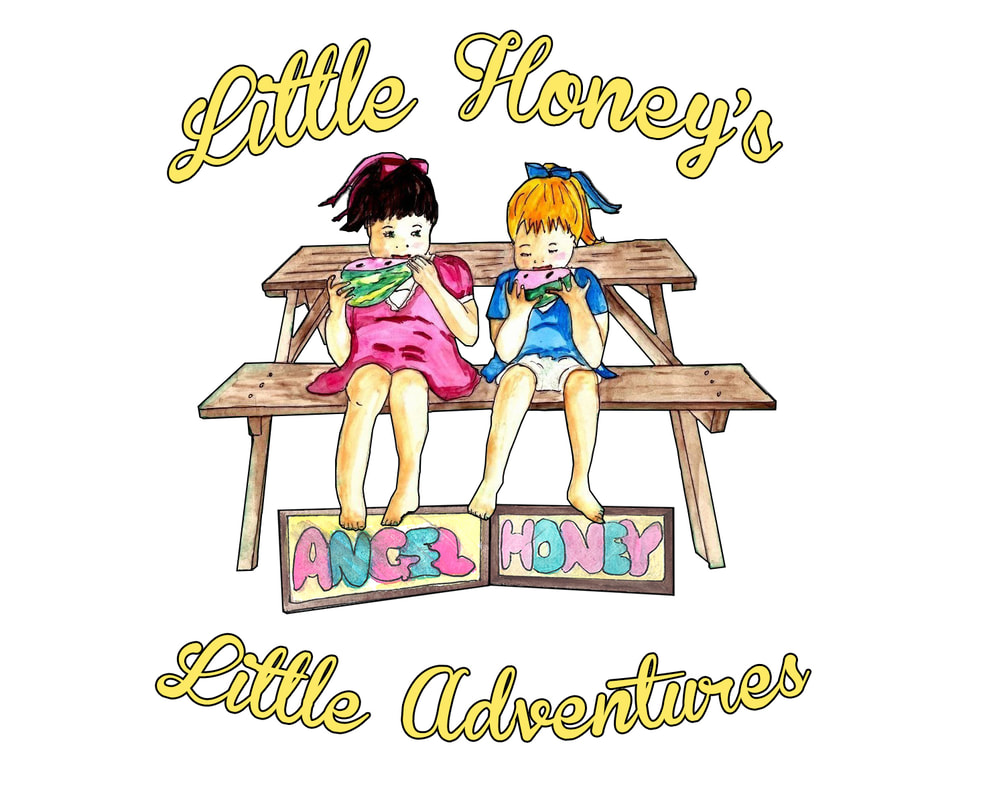|
Becoming a grandparent has been such an honor that we dedicated the Peanut Story to our grandchildren. It reads: “We dedicate this book to all of our little “peanuts” and wish for them special and enduring friendships like the one their grandmothers shared with each other.”
It’s true that my sister and I were best friends growing up. We shared a bedroom, clothes, friends, and so much more. Now we get to share in the joy of being grandmothers and we have found this role to be very different from being mothers – but equally as important. We are, of course, available when possible to lend a hand and provide caregiving to our grandchildren in order to help our hard-working, but sometimes harried, children. However, we have found – and the research agrees – that the role of grandparents goes beyond just being another adult in the lives of the children. Grandparents can have a substantial impact on the growth and development of young children. The extra hugs and cuddles from grandparents can go a long way in providing emotional support and adding an extra sense of security in a young child’s life. Additional emotional care can be achieved by the simple act of a grandparent listening carefully to their grandchild, and then, in return, sharing their wisdom and experiences. Statistically, children with a strong bond with their grandparents grow to have fewer mental health struggles and have higher academic achievement. Some of this is related to the additional nurturing that grandparents offer. However, grandparents can also help foster new interests and hobbies by taking their grandchildren on adventures and experiences they may otherwise not receive. Grandparents may also serve as role models for young children and can expose them to unique perspectives that can only come from an older, seasoned person. And the interactions between grandchildren and their grandparents appear to help with the development of social skills in children, such as compassion and understanding others. Both my sister and I loved being young mothers to our children, and we both grieved that role, while simultaneously celebrating, when our children reached adulthood and independence. Neither of us ever considered how much we would fall in love with this new stage in our lives. But we learned from the best – our Nana had that unusual combination of spunk and gentle love for us. And she taught us how to play Pinochle, make a mean spaghetti sauce, and laugh loudly without hesitation or embarrassment. We hope each of you also had a special grandparent in your life. In fact, it was the arrival of our first grandchildren that motivated us to create the Little Honey’s Little Adventures book series. We wanted to share some of our life experiences with them - and with any other children open to listening and learning from our stories. My sister goes by Yia Yia and I found a book to give her grandchildren called My Yia Yia Loves Me but there are a plethora of children’s books about the relationship between grandchildren and grandparents. Do you have any favorites? Feel free to share in the comment section!
0 Comments
This story is not part of our series because it is probably more appropriate for elementary-aged children rather than preschoolers. Still, it’s such an important topic, we have decided to share our thoughts – and hope you will share yours as well.
In our otherwise happy early childhood, there was a bully who tormented Little Honey and Angel one summer. We tried all sorts of little kid techniques to stop it, such as shouting “Sticks and stones may break my bones, but names will never hurt me." But eventually and unfortunately, the bully started to hit and hurt us until our mother stepped in and put an end to it. We never played with the bully again. We know now that breaking bones and nasty words are both hurtful and harmful and, both physical and emotional abuse, can have a lasting impact on children and adults. There are even laws against bullying. Maryland State Government has adopted a policy against Workplace Bullying with consequences and disciplinary action including termination for the bully. Pursuant to its Bullying in the Workplace Policy, workplace bullying is defined as intentional, persistent, malicious, unwelcome, severe, or pervasive conduct that harms, intimidates, offends, degrades or humiliates an employee, at the place of work or during the course of employment. In addition, the Maryland State Department of Education requires all county boards of education to adopt bullying policies for the county school system. But the reality on the ground is that children are still hurt by physical and emotional bullying. My grandson, a loving and kind child with a huge village of loving parents, grandparents and extended family and friends was tormented relentlessly last school year by a group of 4-6 children in a public elementary school. It started with the milder, but frequent and demeaning, put-downs about the clothes he wore and activities important to him. He refused to report it because he was afraid of losing his friends, even when the bullying escalated and they told him, “We wish you would die because then you wouldn’t be in our school.” and “Maybe I’ll get a knife to kill you, so you won’t be here anymore.” And then just like in our childhood, it turned physical – moving a chair before he sat down, shoving an elbow to his head, punching him in the arms and stomach. The effect on my grandson’s self-esteem has been devastating as he internalized and blamed himself for the bullying. He also experienced panic attacks and anxiety. The school did step in last year, but then stepped out again this year. My grandson was assigned to a class with all but one of the same bullies, and it began all over again. Fortunately, we were able to transfer my grandson to a different school where there is a stronger no tolerance policy for bullying with definitive repercussions. But the impact on him is still very present. Do you have experience with bullying either in childhood or as an adult or with your own children? Was it resolved? If so, when and how has it impacted your life or the life of someone you love? The Baseball Story is more than a story about a little girl, Little Honey, who works hard, practices and ends up hitting a home run to win the neighborhood baseball game. There are many different layers. One is keeping your eye on the ball, that we discussed in our March 1, 2023 blog. There’s also the relationship between Little Honey and Daddy, as well as Little Honey and the wider world of the heroes of her childhood. She wants to grow up and be a baseball player just like the one on her favorite team. She doesn’t personally know the baseball player, but she still wants to emulate him.
Childhood is often filled with heroes, both known and unknown to children. These may include fathers, mothers, grandparents, and siblings but also, unknown heroes such as firemen, sports figures, or fantasy superheroes like Captain America or Spider-Man. There are heroes and mentors who we know and love dearly and others who we admire from a distance but who still play a huge part in shaping our childhood and childhood memories. In each of our books, we include a dedication. The Baseball Story is dedicated to Brooks Robinson, the phenomenal third baseman for the Baltimore Orioles and to the Baltimore Orioles Baseball team of the 60s and 70s, as those memories shaped our childhood. Recently, Brooks Robinson passed away at 86 years old. While we wish his family heartfelt love and sympathy, his death hit hard and felt like such a personal loss. Like so many Baltimore children who grew up in the 60s and 70s, we loved attending games at Memorial Stadium and sitting in those wooden bleachers, in the hot sweltering night heat with the smell of popcorn and peanuts wafting in the air. And for us, Brooks was a legend. Literally, he was the best player ever - never any doubt – and just so amazing to watch and cheer on. And, as it turns out, he was a good person too. So, that made his life and death personal. As a child, I attended many Orioles games with my father and often with my sisters as well. There are so many Brooks stories but one of my favorites is from the 1970 World Series. Brooks was amazing at third base throughout the entire series which earned him the MVP. In the final game of the series when the Orioles had secured a World Series victory, Brooks came up to bat. He was cheered loudly, but then struck out. Yep, Brooks Robinson struck out, at his last at bat in the 1970 World Series. Then something wonderful happened. The stadium erupted in cheers and stood on their feet giving Brooks a well-deserved standing ovation. Our father, who is the model for Daddy in The Baseball Story, loved Baltimore, baseball, and Brooks. He died over 36 years ago. But with Brooks Robinson’s passing, there is renewed sadness of loss - but love, too - as all those wonderful memories and feelings are intertwined with each other. Did you have a personal hero as a child? Did you have a personal hero who was a member of a sports team or fantasy series such as Superman, Spider-Man or My Little Pony? If so, how did it impact your childhood and your life? The primary lesson of our book, The Peanut Story, was about how sharing stories is a way to show someone how much we love them. You can find out more about this in our August 2021 blog. There is a second lesson, though. In the same story, Little Honey feels badly for Baby Tru who is having trouble falling asleep. She believes he is lonely and realizes how lucky she is to have a best friend in her sister, Angel. In an effort to help her little brother, Little Honey creates an imaginary friend for Baby Tru, Peter Van Der Peanut.
Definitions for imaginary friends abound and sometimes include the personification of a character, giving special traits to a toy or inanimate object, and creating a separate character who is invisible to others. Psychologists may hold different viewpoints on these varied definitions but seem to come to consensus on the latter definition. Other terms that are sometimes used instead of imaginary friends include pretend, made-up, or invisible friends. As it turns out, creating imaginary friends is relatively common for children. More than a third of all children make up invisible friends for themselves, and it’s not just preschool children that do this. Older children may also have imaginary friends. At one time there was concern among parents and psychologists that made-up friends could be predictive of future mental health issues, however current research negates that. It seems that, not only are children with imaginary friends as mentally healthy as those without, there may actually be some emotional benefits. These imagined companions have the potential to boost children’s creativity, improve a child with their social interactions, help children cope with the external world, and enhance problem solving skills. There are countless children’s books that feature imaginary friends. Perhaps one of the most beloved children’s stories, Winnie-the-Pooh, provides a classic example. In this book, all of the animals in the Hundred Acre Wood, from Pooh to Tigger to Kanga, were inspired by the stuffed animals the author, A.A Milne, purchased for his son, Christopher Robin. Did you have any imaginary friends when you were a child? Do your children have any? If so, feel free to share your stories. In our book, The Watermelon Story, Little Honey and Angel discover that learning and growing can take a long time and, sometimes, be quite challenging. We discussed this in our blog in November 2021. However, there is also something of great value in the second lesson in the same book, “Watermelons have seeds to grow more watermelons.” By planting their watermelon seeds, Little Honey and Angel learned about the circle of life as well as how to provide attention to and care for their fledgling plants.
The natural world is a beautiful and wondrous thing. Even your very youngest children can develop an appreciation for it when they have the opportunity to engage in it. Numerous studies point to a diversity of benefits for children from nature-based learning. These include, among others, increased creativity, more cooperative play, and improvement in academic achievement. There are a plethora of activities and lessons for children available for free from such organizations as the World Wildlife Federation and the World Forum Foundation. These activities are designed to be age appropriate. Some lessons require little to no equipment or materials. For example, you can set up a nature scavenger hunt using pictures of the objects you want your little ones to find. Another idea is to set up a tub of water with a variety of everyday objects to see if they sink or float. Yet another idea is to sit out in a forest and let your children just observe and describe to you the behavior of any animals that you may see. And, of course, you can always plant watermelon seeds! While somewhat controversial, we enjoyed sharing the book, The Giving Tree by Shel Silverstein, with our children. In that book, the tree continually gives to the boy to meet his needs without asking for anything in return. Some individuals and organizations maintain this encourages children to believe in depleting the environment in a selfish manner. We believe, however, that with appropriate guidance, it is possible to help your child find empathy and love for the tree and that this may result in them seeing the natural world a little differently. What do you think of this book - and do you have other favorites that use nature to teach valuable lessons to children? If so, please feel free to comment below. As we have explained in other blogs, the Little Honey stories are little vignettes from our early childhood and, while somewhat embellished, actually occurred. The goodwill we displayed as little girls towards each other and the world around us resulted in lasting benefits throughout our lives.
In early childhood, Angel (or Tara) was the quieter, more studious, very artistic and creative, yet less athletic, child while Little Honey (or Rachel) was the more rambunctious and physically active one with a penchant for telling stories. We have a blog about sibling relationships and another one about how, in the Back Story, each child wanted to mirror the other. Mirroring from parent to child and sibling to sibling is a healthy developmental stage. As Tara and I grew from small children to young teens, we often enrolled in the same or similar activities, such as the YMCA Junior Leaders and gymnastics and, as the younger sibling, I followed Tara’s lead. Yet during this time, both of us learned to lean into our individual talents. So, I didn’t become the gymnast that Tara was in high school and college but found playing other Varsity sports satisfying. Instead of teaching as a career which I loved doing, I went into law. And when Tara started playing the drums, I took piano lessons. Throughout our lifetime, we have moved away from being mirrors of each other but instead, to focus on our best talents while at the same time, supportive of each other. So, it was an easy ask to see if Tara, who has such lovely artistic talent, would illustrate the Little Honey books. And then she devoted so many of her creative talents to developing the Little Honey books, webpage, facebook page and other features of our books. I will say that as the younger sibling, I have had the distinct advantage to follow my very creative, intelligent older sister, Tara. And it’s still happening now that we have entered our “golden” years. What is your relationship with your sibling(s)? How has it changed from childhood to adulthood? Feel free to add your thoughts in the comments section below. AND please stay tuned for Part II of this Blog in July 2023! At the end of each of our Little Honey Little Adventures stories, there is a list of Little Lessons. These lessons are for parents and grandparents to share with their little ones. Each list begins with a very obvious statement, with two progressively more serious lessons for discussion.
In The Baseball Story, the final lesson is on hard work and persistence, which we covered in our June 2021 blog. But there is another lesson in that book – how important it is to keep your eye on the ball. The idiom is meant literally in The Baseball Story. Little Honey knows the only way she will ever hit the baseball is if she keeps the ball in her line of sight. However, the expression may also be used to remind someone to pay attention to what is important and/or what may be happening in the current situation. In addition, it may be a way of suggesting that someone stay alert and be ready for possible and potential changes. Little Honey was motivated by her desire to hit the baseball. So clearly, one of the most important steps in helping children with paying attention and staying focused is encouragement and inspiration. The good news is that paying attention is a skill that can be learned and gets better with practice. Preschool years are not too young to begin learning how to concentrate and focus as long as the expectations are appropriate for that age group. Children in that age group may only be able to handle 5-20 minutes of giving a task their full attention. In addition they will need to take breaks. They can also only manage one task at a time. Just like adults, children find deep breathing helps them stay focused. It’s never too young to learn about mindfulness and self-awareness, especially since paying attention is not every youngster’s forte! One classic picture book that may help teach children this skill is Blueberries for Sal that tells the story of a little girl who goes picking blueberries with her mother at the same time a mother bear and her cub are eating blueberries in the same patch. Because she is not paying attention, the little girl inadvertently begins to follow the mother bear rather than her own mother. Do you know a book that can help teach children to pay attention? If so, feel free to share in the comments. We’d love to hear from you. tIn The Back Story, Angel tries to be more adventurous and, in that way, more like Little Honey. She climbs up Little Honey’s favorite tree but falls, as she is descending, directly onto her back. That part of the story is enough to give the book its title. But there is more to the story. Little Honey tries to be more like Angel, by being gentle and compassionate. She not only goes for help after Angel falls, but kisses Angel’s back before her Daddy arrives on the scene to bring Angel to home.
One of the Little Honey’s Little Lessons for this book states, “When someone you love climbs too high, watch their back.” According to the Merriam-Webster dictionary, the phrase “watch someone’s back” is an idiom in our language and culture that has developed the following meaning - “to protect someone who is doing something that is dangerous or risky.” This is a complicated notion and yet Little Honey did what she could to watch her sister’s back, handling the dangerous situation well. How is it that a young child could learn the basics of protecting and caring for someone? There are really two parts to this. In order for a child to feel competent to help someone else in a dangerous situation, they need to understand some basic safety rules. They also need to develop empathy for others. To learn both of these, the answer is simple – they need role models to show them. You are probably already doing this. You show your child you care by keeping them as safe as possible. When you treat your child with kindness and respect, they learn to treat others with kindness and respect. Then when they have demonstrated compassion, you are providing the right type of positive reinforcement to encourage them to continue with this behavior. One of our favorite children’s books is called Love You Forever. In this story a mother sings a lullaby to her young son throughout his life regardless of his behavior until, when she has grown too old to sing to him, he sings the lullaby to her and ultimately to his own child. It is a simple and loving example of how modeling behavior and compassion has a profound impact. Do you have an example of how you help your children develop compassion for others? If so, feel free to share in the comments below. The Little Honey's Little Adventures book series is based on true stories from our early childhood growing up in Baltimore, Maryland in the late 1950s and early 60s. The stories are ultimately about unconditional family love as my sister, Tara, and I navigated our small world.
Our family was like many others from that era. Our father, Louis Eisenhauer worked outside of the home and our mother, Rosemary worked in the home. Sociologists describe this post World War II family structure as a response to the worldwide chaos of the war and its aftermath. Yet the post war family structure was a shift from the mid to late 19th century when many extended families lived together. In The Icing Story, after Mommy and Angel put icing on her birthday cake, Angel goes to read a book and Mommy goes to do the laundry. In our household, this is what happened. Our father would leave for his job every day and our mother would stay home and care for us and do the household chores. But it was not a Leave it to Beaver or Ozzie and Harriet household. Outside of work, our father was involved in the Civil Rights movement and outside of the home, our mother worked on her college degree and was involved with the League of Women voters. But times really changed for many American families beginning in the late 60s and 70s and continuing to the present. Far more households included divorces, remarriages, and extended family structures. Stepparents, step-siblings, and half siblings became part of the norm. Interracial, inter-religious, interethnic, and same sex marriages added to the mix. In some cases, even good friends became part of the family structure. All of these changes have the potential to result in healthier and happier families. After my divorce, I started hosting Prequel Thanksgiving dinners the weekend before Thanksgiving Day as a way for all my children, and extended family and friends to celebrate together without interfering and complicating their Thanksgiving Day plans. Like so many others, our celebrations often had a mixture of family related by blood and family who were not. Who will be at your Thanksgiving celebration and dinner this year? Any other plans for gathering to celebrate with extended family or friends? Favorite recipes to share? Have a very Happy Holiday season! The holiday season is a joyous time to celebrate with family and friends but there are many in our community who are struggling to put food on the table and cannot afford necessities. For this reason, Little Honey’s Little Adventures is donating to the Lighthouse Shelter in Annapolis as well as the Maryland Food Bank and Toys for Tots. In The Beach Story, Little Honey finds herself enjoying a group of older children who were playing tricks on other people. Little Honey was too young to know how to limit the behavior and made a mistake. Little Honey realized her mistake and chose to spend the rest of her vacation playing with her older sister, Angel, rather than repeat her mistake. However, what are ways that parents can help once they realize their children are repeating or learning undesirable behavior from other children?
Often, a common refrain among parents is their children have fallen in with a bad crowd or they are behaving badly in order to fit in with their friends. One of the most important jobs teachers and parents have is to help guide children toward their independence and help them make decisions that are right for them without regard for how they may be viewed by others. In order to do this, one thing to avoid is criticizing the other children which may result in having your child defend their friends and may even cause them to cling more tightly to the group of friends in question. It may also be necessary to accept that children choose their friends and like to be with those who are doing things they want to do. These “bad” children may be more similar to your child than you realize. In the Beach Story it is fair to say that Little Honey has a mischievous streak and she found the older children on the beach to be both stimulating and fun. This doesn’t mean there are no tools which can help you guide your child. First, it is fine to occasionally point out that you don’t like the behavior which is being exhibited. Second, you can also provide a simple statement of how you don’t want your child to get into trouble for doing what their friends are doing. Third, It is reasonable to set boundaries on how much time your children spend with friends whose behavior doesn’t mesh with your values. As always our “go to” approach is to use books to teach children these important lessons. The Wind in the Willows is a classic tale which features animal friends who help one of their friends find a safer path to follow that will keep him out of trouble. There are also many children’s books focusing on not following the crowd while showing it’s okay to be different. Do you have a favorite book that you read to your little ones to help them behave and find their own path? If so, feel free to share! |
Tara Ebersole
|
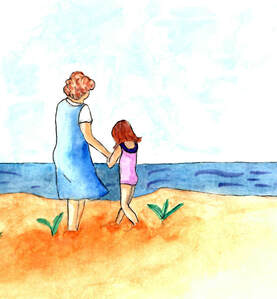
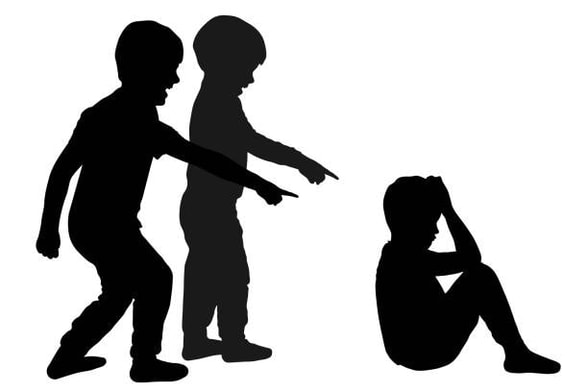
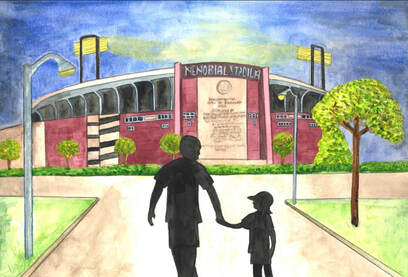
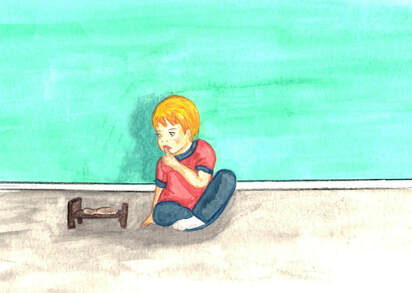
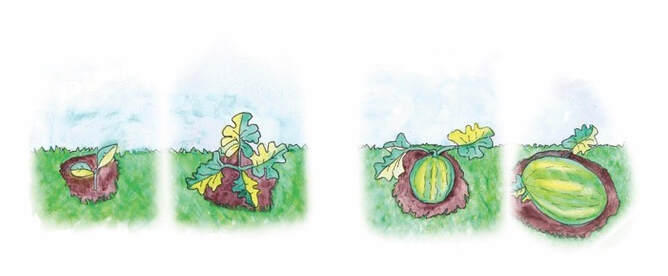
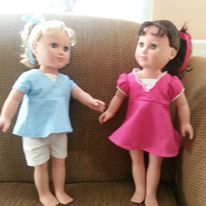
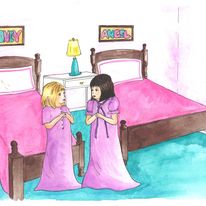
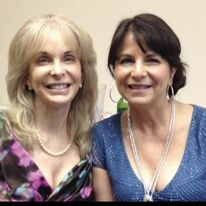
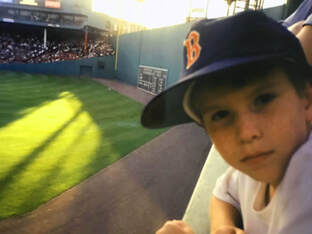
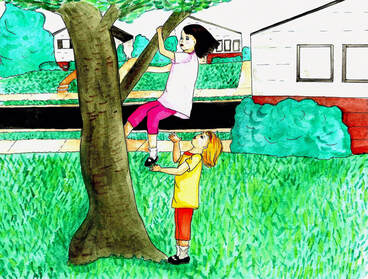
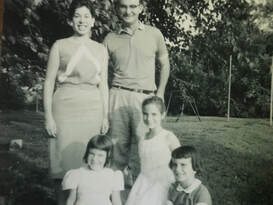
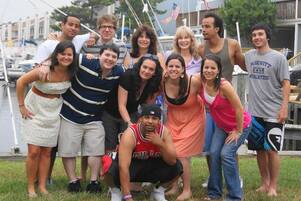
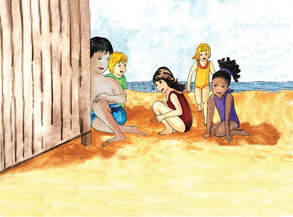
 RSS Feed
RSS Feed
